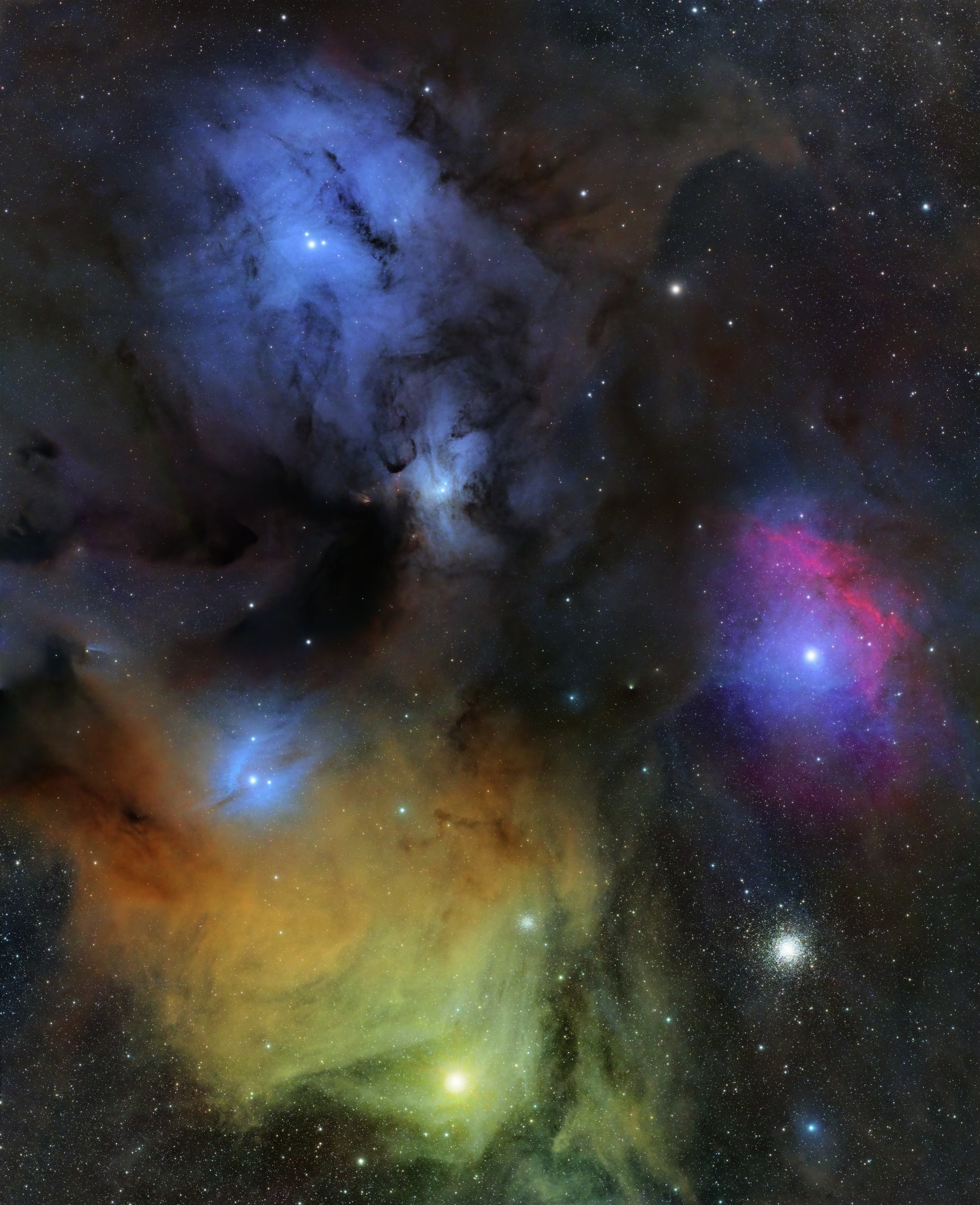Rho Ophiuchi Cloud Complex - RGB
Colorful star-forming region in Ophiuchus constellation

Click to explore in full resolution
Technical Specifications
Resolution: 5843x7183
Integration: Multi-night RGB capture over 2 days
Captured: Two-day imaging session
Equipment: Redcat71 refractor (350mm) with ZWO ASI2600MM Pro camera on Advanced VX mount
Location: Just outside Joshua Tree National Park, California (Bortle 2 dark skies)
Processing Workflow
Scientific Context
The Rho Ophiuchi cloud complex is one of the closest star-forming regions to Earth, located approximately 400 light-years away. This region is renowned for its spectacular colors, ranging from blue reflection nebulae to red emission regions and dark dust lanes.
The complex showcases multiple types of nebulae in a single field: blue reflection nebulae where starlight scatters off dust particles, red emission nebulae where hydrogen gas glows, and dark nebulae where dense dust clouds block background starlight. The variety of colors in this region makes it one of the most photographed areas of the night sky.
This image was captured from the pristine dark skies just outside Joshua Tree National Park, taking advantage of the exceptional Bortle 2 conditions to reveal the subtle colors and intricate details throughout this magnificent nebula complex. The two-day imaging session allowed for careful acquisition of both the bright reflection regions and the fainter emission areas.
This is a mosaic composed of two separate fields that were combined during post-processing using advanced gradient combination techniques. The mosaic approach allowed for capturing the full extent of the Rho Ophiuchi complex while maintaining high resolution detail throughout the frame, something that would be challenging with a single wide-field exposure.